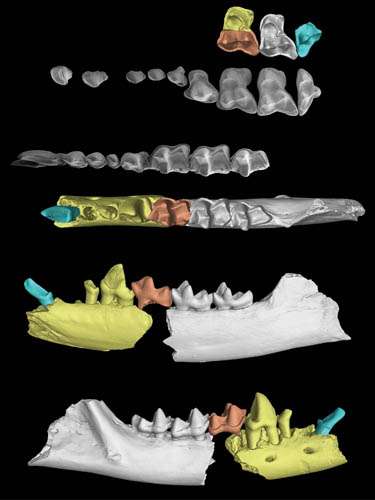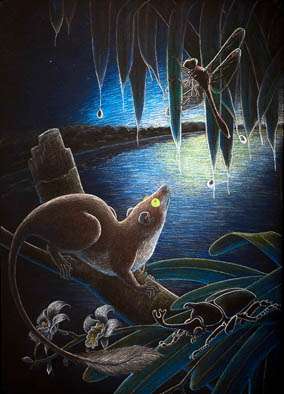Earliest-known treeshrew fossil found in Yunnan, China

Treeshrews are widely considered a "living model" of an ancestral primate, and have long been called"living fossils". Actual fossils of treeshrews, however, are extremely rare. In a paper published 14 January in Scientific Reports (6), Drs. LI Qiang and NI Xijun, Institute of Vertebrate Palaeontology and Palaeoanthropology (IVPP), Chinese Academy of Sciences, reported a new fossil species of Ptilocercus treeshrew from the early Oligocene (over 34 million years ago) of China that represents the oldest definitive fossil record of the crown group of treeshrews and nearly doubles the temporal length of their fossil record.
These new treeshrew fossils were discovered at the Lijiawa mammalian fossil locality near Qujing City in Yunnan Province, China. Among the numerous fossil mammal specimens recovered from this fossil site are those belonging to a large form of Gigantamynodon giganteus, an unnamed species of Cricetops, and a primitive Eucricetodon comparable with Eucricetodon caducus from the earliest Oligocene of Xinjiang, China. Those species all indicate an early Oligocene age for this fauna.
The fossil species is strikingly similar to the extant pen-tailed treeshrew (Ptilocercus lowii), a species generally recognized as the most primitive extant treeshrew. It demonstrates that Ptilocercus treeshrews have undergone little evolutionary change in their morphology since the early Oligocene.
Morphological comparisons and phylogenetic analysis support the long-standing idea that Ptilocercus treeshrews are morphologically conservative and have probably retained many characters present in the common stock that gave rise to archontans, which include primates, flying lemurs, plesiadapiforms and treeshrews.

"This discovery provides an exceptional example of slow morphological evolution in a mammalian group over a period of 34 million years, and it supports the suggestion that the extant P. lowii gives us a living glimpse of the first ancestor of the Archonta, our own superordinal group", said lead author NI Xijun of the IVPP, "The persistent and stable tropical environment in Southeast Asia through the Cenozoic likely played a critical role in the survival of such a morphologically conservative lineage".
This project was supported by the Strategic Priority Research Program of Chinese Academy of Sciences, the National Basic Research Program of China, the CAS 100-talent Program, and the National Natural Science Foundation of China.
More information: Qiang Li et al. An early Oligocene fossil demonstrates treeshrews are slowly evolving "living fossils", Scientific Reports (2016). DOI: 10.1038/srep18627
Journal information: Scientific Reports
Provided by Chinese Academy of Sciences



















